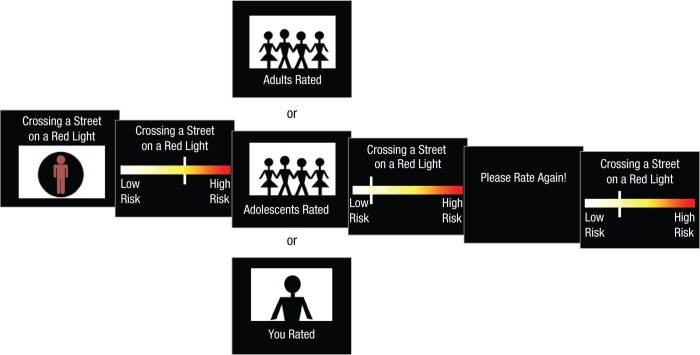Fig. 1.
Illustration of the trial sequence. Participants were asked to imagine that someone was engaged in an activity (in this example, crossing the street on a red light). They then rated the activity’s risk by using a computer mouse to move a slider on a visual analogue scale. There was no time restriction for this first rating. After making this rating, participants were shown (for 2 s) a risk rating of the same situation that was ostensibly provided by a group of either adults or teenagers (the social-influence conditions) or was the participant’s own rating (control condition). The ratings from the social-influence groups were actually randomly generated. Finally, participants were asked to rate the same situation again. There was no time restriction for the second rating. The next trial started after 1 s.

